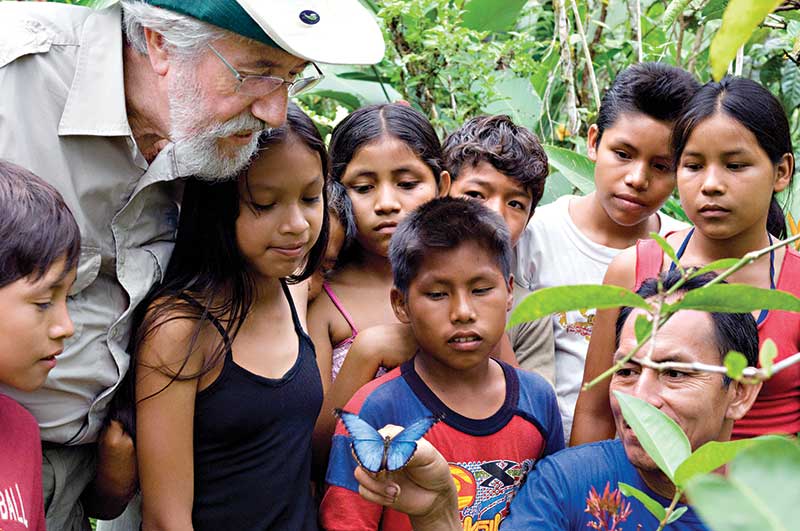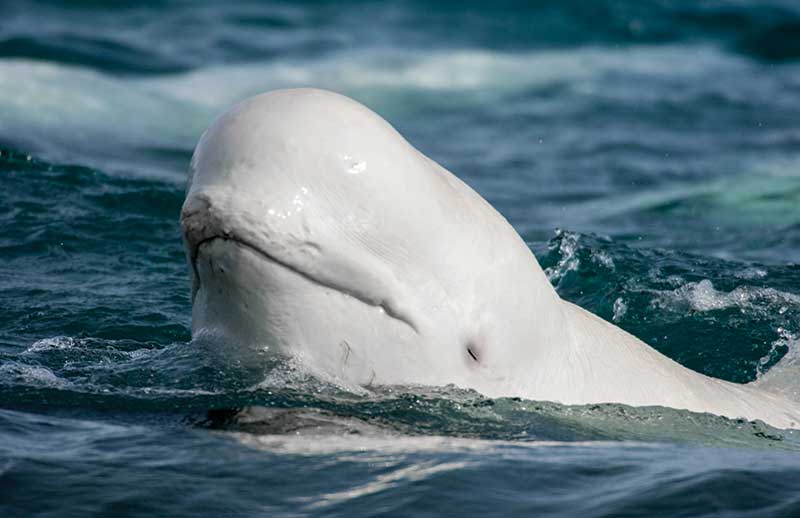Rediscovering a World Worth Conserving
Words by Jean-Michel Cousteau and Holly Lohuis

It has been almost a year now since I have had the opportunity to explore beneath the surface of the sea; and like many of you, I have stayed where it has been the safest, in the comforts of my home in Santa Barbara, CA. Usually, I spend much of my time traveling, diving, exploring, and producing films about this amazing blue planet. But this past year has been a wake-up call on how fragile our planet is and how intricately connected we are and dependent upon healthy natural ecosystems.
The time is near when we can travel again and enjoy the opportunities to explore beneath the surface of the sea, and be reminded of the beauty, intricacy, and complexities of life when exploring our favourite dive sites.
The ocean is a place where we can uncover many of life’s mysteries, but it is also a place we have come to witness is in trouble. But so too is it a place of hope; hope that it will rebound with the proper attention and care, now that we have endured one of the more trying times in recent human history, surviving the COVID-19 pandemic.
Biodiversity
We share this fascinating water planet with millions of species and billons of individuals, each with their own ecological story, leading their own lives, many contributing to the stability of their surroundings and all connected to the lives around them. It is an amazing wonder to behold, our wild biodiverse world. Yet it is so easy to take for granted. Overfishing, plastic pollution, chemical contamination, ocean acidification, habitat degradation, and climate change are just some of the threats weakening the web of life in the ocean.
Most people understand that we are the driving force of a changing climate and scientists warn us that this is the main threat to our future survival. But few know that the loss of biodiversity is just as much of a dire threat. Fundamentally, biodiversity is the key to the successful future of humanity: biodiversity equals stability. I am so happy to see and be a part of a global movement, supporting the bold actions around the world of the 30 x 30 campaign: protecting 30% of our planet, both on land and in the ocean by 2030. So how do we engage fellow humans to see how attainable and achievable this is? I believe it starts with remembering a life changing-experience with one of your favourite ocean creatures. We all have them. What is yours?
These opportunities to connect with wild animals can transform our lives and, more importantly, help save theirs. Nature teaches us the importance of being present and appreciating the awe and wonder of the given moment; watching wildlife helps open our minds and hearts to better understanding the complexity, fragility and vulnerability of each species. It gives us the opportunity to see clearly our detrimental impact on their habitat, their only home. This moment of stillness in nature, watching wild animals, I honestly believe, gives us the motivation to best protect the natural world.

Ground zero
One of the best places to take all this in is while leaning over the railing of a fast-moving vessel, searching for glimpses of quick flashes of dorsal fins or spouts of a whales or dolphins off in the distance. I have spent hours, even days, scanning the horizon for any disturbance that might alert us to possible action to watch and film. Even the elusive beluga whales swimming in the cloudy waters of Cook Inlet, Alaska were worth the search, giving us a glimpse into their watery world every time they came to the surface to breathe.
Beluga whale populations are estimated to be around 200,000 individuals and are found in many different populations, living in the higher latitudes of the Arctic and sub-Arctic. Some of populations are thriving while others, including those found in Cook Inlet, Alaska and St. Lawrence River, Canada are considered endangered. They live at ground zero for climate change and their future depends on us understanding how they and other Arctic species can adapt to fast changing environmental conditions and how their populations are fluctuating over time.
As some of the most vocal whales, belugas are known as ‘sea canaries’ because of their at least 11 different vocalizations, including the high-pitched whistles, squeals, and chirps that they use to be in constant contact with one another and to navigate the murky and icy conditions of their aquatic home. Experts fear that as the Arctic warms, there will be less and less ice and undoubtedly more man-made noise pollution from ships and new seismic sounds, exploring for oil and natural gas. The unanswered question is how will this impact the acoustic world for the belugas and other Arctic animals?
A recent underwater acoustic study demonstrated many of the belugas’ prime summer habitats are dominated by sounds of wind and waves in the lower frequencies. In higher frequencies, beluga sounds are the main source of sound. Acoustic monitoring is key to establishing baselines of understanding how humans are changing the underwater soundscape and the potential impact it will have on beluga whales. In other parts of the world, extreme underwater noise pollution can harm whales directly by damaging their hearing and in some cases even causing internal bleeding. In extreme cases noise pollution, including sonar testing, can cause the whales to surface so quickly they develop nitrogen narcosis, the bends. And just like for us, the bends can cause severe internal damage and even death.
What is the future for beluga whales and their ability to adapt to a rapidly changing environment of a warming ocean, less ice, and more man-made underwater noise pollution? Making the connection between ocean protection and our everyday life choices has always been an ongoing theme in many of my documentaries. We cannot forget we share the ocean with a spectacular interconnected community of life. It is in the ocean where we find 90 percent of the living space on the planet. As we face the many environmental challenges—the pandemic crisis, the climate crisis and the loss of biodiversity crisis—we need to focus on the links of the many solutions that are happening at all levels of society, from local conservation efforts to global efforts, including most recently Canada and United States joining over sixty countries to commit to the achievable goal of protecting 30 percent of our planet as wild spaces for the diversity of
life by 2030.
We are the motivating force and we need to continue to focus on hope: hope for humanity and hope for our water planet that supports all life. I do feel quite hopeful that we can indeed reverse the tremendous loss of biodiversity. It all starts with one single dive, slipping beneath the surface of the sea and allowing nature to reveal all its glories. Let’s go diving and see for ourselves a world worth conserving now and for all the future divers to follow in our fin steps. When we protect the ocean, we protect ourselves.
Leave a Comment







